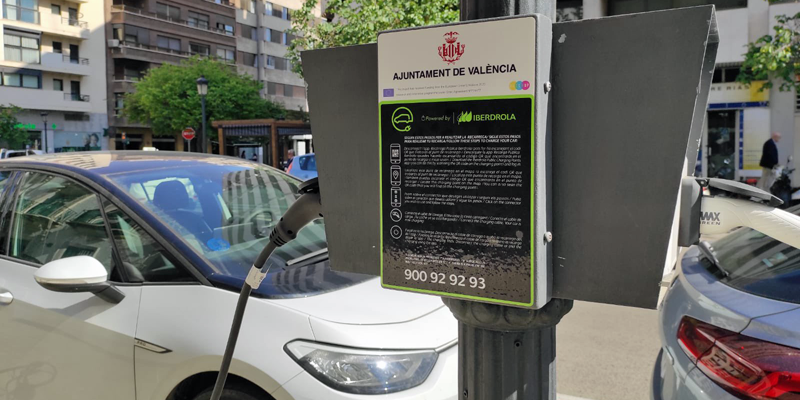The public electric vehicle charging network in Valencia has grown from 11 to 115 charging points in just one year, most of which are semi-rapid charging stations.
According to Julia Climent, Councilor for Human and Technical Resources, this means that Valencia City Council has increased the number of refueling stations in the city tenfold.
This deployment is part of a broader movement that aims not only to expand infrastructure but also to optimize its operation.
In this regard, the Valencian government is currently putting out to tender a centralized management system for new municipal charging points.
As indicated in the specifications for the “Contract for the electric vehicle charging management service”, a “Municipal Platform for the Management of Electric Vehicle Charging” is being developed in collaboration with Red.es.
This includes eight 50 kW DC fast charging points.

According to sources consulted by Mobility Portal España, it is “a single management system for all charging points in Valencia, similar to that of Madrid and Barcelona.”
And they explain that this would resolve the current situation, in which each of the city’s chargers operates independently.
“However, it is unknown when it will be launched or what stage of development it is in,” they say.
Meanwhile, the tender for the management service of all new charging stations installed in 2024 is in its final processing phase.
Its purpose is to allow users to recharge their vehicles through a computer application.
Through this app, you can check the location of chargers, activate the selected one, recharge your vehicle, and make payments, all from your mobile phone.
“The City Council is contracting for the management and maintenance of the charging stations, along with the IT app and the 24/7 incident response service,” Climent said.
With this, the City Council seeks to “respond to the needs of an increasing number of electric vehicle users.”
The 115 new stations have been installed near the city’s markets and commercial areas.
To access its use and check locations, interested parties must do so through the “Iberdrola Public Recharge ” application, available for Android and iOS mobile devices.
According to information collected by Mobility Portal España, Valencia’s plan is organized into three strategies: implementation of fast chargers, deployment of long-stay charging stations, and network integration through a public digital platform.
In line with this strategy, the development of smart parking is also highlighted, incorporating technology aimed at energy efficiency and the dynamic adaptation of electricity consumption.
Valencia reviews eMobility regulations
Recently, the Valencia City Council’s Department of Urban Planning has launched a review of its urban planning regulations to adapt land use to the needs of electric mobility.
According to a preliminary draft, it is proposed that slow charging stations never be located below the first basement, while high-power charging stations will be prohibited in hotels, tourist accommodation, and residential buildings.
According to the Valencian Electric Vehicle Association (AVVE), the regulations make sense in certain respects:
“The proposed capacity limitations make sense because high-power chargers are not typically installed in hotels, vacation homes, and residential buildings.”
This is because in such locations, high-speed equipment has limited use.
“In a shopping center, for example, with a 150 kW device, the car charges faster than customers can do their shopping,” they explain.
This generates revenue for the charging network, but adds no value to the shopping center.
And they add: “The same applies to hotels: a fast charger will attract users who won’t necessarily be staying there.”
Regarding the second measure contemplated in the regulation, he warns: “It would be advisable to review the limitation on installing slow charging only on the ground floor, as it could hinder the development of electric mobility.”
One of the factors that motivates drivers to purchase an electric vehicle is the ability to charge it from home.
According to AVVE, most, if not all, residential parking spaces are underground.
Such regulations could force users to rely exclusively on public infrastructure, “which is more expensive.”
This measure could also address problems arising from the DANA, which would justify the decision to prohibit installations in basements, especially in flood-prone areas.
The regulation classifies charging services into three main categories: basic (up to 8 kW), slow (between 8 and 22 kW), and high power (more than 22 kW).
This last group includes both alternating and direct current chargers, with subdivisions into powers lower and higher than 250 kW.
In principle, they can be installed throughout the city, but with some of the compatibility limitations mentioned above.
Could it affect chargers already installed?
Although there is still no concrete response from the City Council, AVVE clarifies that regulations are rarely retroactive.
“I don’t think existing basement points need to be removed, but I do think it will affect new installations, which will have to comply with these rules,” they say.








